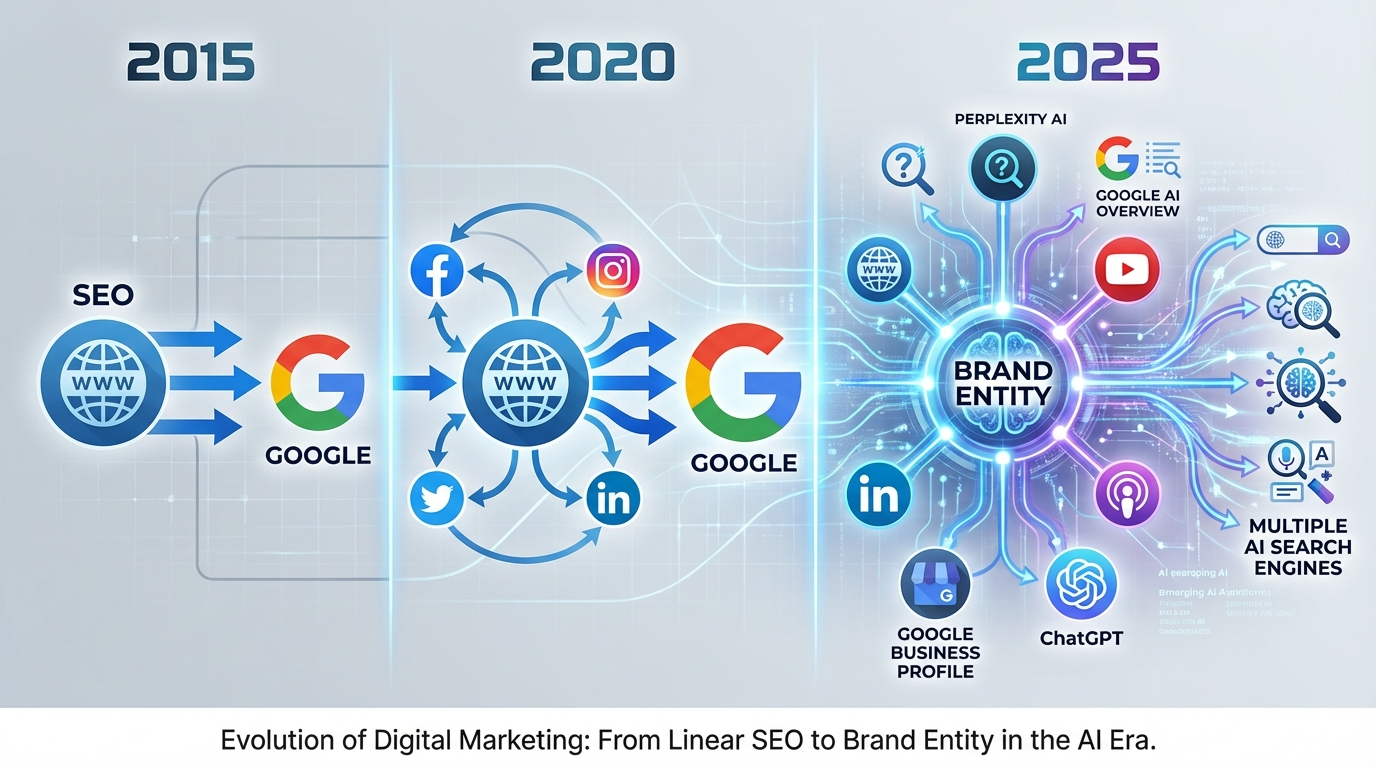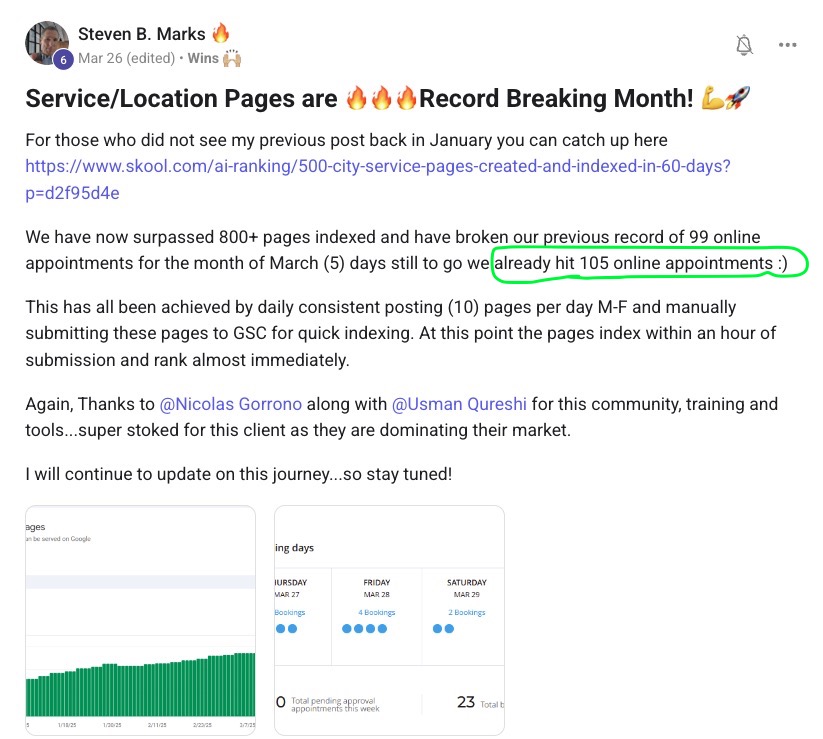
Traditional SEO tools are falling behind. Google is evolving faster than ever, and if your tools aren’t keeping up, your rankings will slide. But what if you could build your own SEO assistant? One that knows your site, your competitors, and gives you crystal-clear, data-driven answers?
Yep. I’m talking about Claude 4 + Data For SEO + a lightweight MCP integration that turns Claude into an SEO strategist with live data access.
Here's how to set it all up from scratch. No dev skills needed.
What You’ll Need
Before you start, get these tools ready:
- Claude for Desktop – Mac or Windows: Download Claude
- Node.js – Runtime for installing dependencies: Download Node.js
- Data For SEO account – Use this link to get $1 credit (goes a long way): Sign Up
- VS Code – Free code editor to tweak one config file: Download VS Code
Step-by-Step Setup
1. Install Claude + Node.js
Start by installing Claude and Node.js on your computer. Simple next-next-finish installs.
2. Sign Up for DataForSEO
Create an account, grab your login email and wait for your API password (it’ll come via email). You’ll need both soon.

3. Launch Claude Desktop
Open Claude on your Desktop, log in, and go to:
Settings → Developer → Edit Config

This opens a config file in your editor. You'll paste this 👇 snippet of code here that connects Claude to Data For SEO via the MCP (multi-call plugin).
{
"mcpServers": {
"dataforseo": {
"command": "npx",
"args": [
"-y",
"dataforseo-mcp-server"
],
"env": {
"DATAFORSEO_USERNAME": "your_user_name",
"DATAFORSEO_PASSWORD": "your_password"
}
}
}
}Paste the code, then replace the placeholder email and password with your actual API credentials from Data For SEO.
CTRL + S to save. Close the editor.
4. Restart Claude
Quick-restart Claude. Now under the Search and Tools tab, you’ll see a new integration: Data For SEO.
Click it. Welcome to your new SEO command center.
Time to Test It
Ask Claude something like:
“How many keywords is [yourcompetitor.com] ranking for? Give me the top 20, and their backlink summary.”
You’ll need to allow API access the first time, but then it remembers. In seconds, you’ll get real search volume, estimated traffic, backlink counts, domain authority, and more.
Not AI guesses. Real, live data.
Video Installation Guide

Explore Our Latest Insights
Stay updated with our recent blog posts.
What a year.
If you've been anywhere near SEO or AI this year, you've probably felt like you're drinking from a firehose. New models dropping every other week. Google AI Overviews everywhere. ChatGPT launching search. Perplexity becoming a thing. And about 47 new acronyms to learn (GEO, LLMSEO, AISEO... I could go on).
I've spent 2025 deep in the trenches with our AI Ranking community, testing, breaking things, and figuring out what actually works. Here's what I learned.
1. SEO Is Still SEO (Just in a Fancier Outfit)
Let's get this one out of the way first.
There's been a lot of noise about "GEO" (Generative Engine Optimization) and "LLMSEO" and "AISEO" and whatever other acronym someone's trying to trademark this week. And look, I get it—new things need new names. But here's what I keep seeing over and over again:
It's all still SEO.
People love repackaging the same thing in shiny new wrapping paper. Don't get me wrong, a lot has changed. But the fundamentals? Still the fundamentals.
You still need solid on-site SEO. You still need proper schema markup. You still need to put the right keywords in the right places—title tags, H1s, H2s, the usual suspects.
We see this constantly with our community members. They come in asking about GEO and AISEO, all excited about the new stuff. But as soon as we show them how to nail the basics of good SEO? That's when the results actually start rolling in—traffic increases, leads from AI search, the works.
So before you chase the shiny new thing, ask yourself: are my basics actually dialled in?
2. SEO Has Evolved Beyond Websites
Here's where things have genuinely shifted.
SEO isn't just about your website anymore. It's about building authority across the entire internet—and that includes social media.
Why? Because AI search engines are paranoid about being wrong. They're constantly trying to limit mistakes, and one of the main ways they do that is by only citing sources they trust. They want reputable, verifiable sources.
So how do you become one of those sources?
You stop thinking of your business as just a website and start treating it as an entity. A brand that exists everywhere online. Your website, yes—but also your LinkedIn, your YouTube, your podcast appearances, your guest posts, your Google Business Profile, your citations across the web.
The more places you show up consistently, the more believable and trustworthy you become. And that's exactly what the AI needs to feel confident citing you.

3. The Way We Measure Success Is Changing
If you're still obsessing over traditional traffic metrics, I've got some news that might sting a bit.
We're all getting less traffic. That's just the new reality.
AI Overviews are answering queries directly. People are getting answers in ChatGPT and Perplexity without ever clicking through. Zero-click searches are through the roof.
This is going to fundamentally shift the advertising industry. I wouldn't start a how-to blog or recipe site hoping to make money from AdSense—let's put it that way.
But here's the flip side (and it's a good one):
The traffic you do get is converting at insane rates. According to Ahrefs, AI search visitors convert at 23x higher rates than traditional organic traffic. Seer Interactive found ChatGPT traffic converting at 15.9% compared to 1.76% for Google organic.
Less traffic, but way more valuable traffic.
So the question becomes: how do you get more of that high-intent traffic?
4. Transactional Pages Are Your Secret Weapon
The answer to that question? More transactional pages.
Here's what I mean:
Every single service you offer should have its own dedicated page. Don't lump all your services onto one page—they'll compete with each other and make it easier for competitors to outrank you.
Let me give you an example.
Say you're Jim's Plumbing, competing against Bob's Plumbing. You check out Bob's website and see he offers three main services: 24-hour emergency plumbing, hot water installation, and pipe leak repair. He probably offers more, but those are the only ones on his "Services" page.
Here's how you beat Bob from an on-site SEO perspective:
At the very least, create a dedicated page for each of those services. This allows AI search engines to deliver the exact right page when someone searches for that specific service. Instead of one generic services page competing for everything, you've got targeted pages competing for exactly what people are searching for.
Now, there's a lot more that goes into ranking well. But this one? This one always works.
5. Location Pages Still Crush It
One thing that surprised me this year: creating hundreds of location pages with individual service pages still works to outrank competitors. Every. Single. Time.
Case in point: one of our community members, Steven, created over 800 service/location pages for a client. The result? 105 online appointments in a single month—breaking their previous record of 99. And the pages were indexing within an hour of submission.

His approach was simple but consistent: 10 pages per day, Monday to Friday, manually submitted to Google Search Console for quick indexing. No magic. Just volume + consistency + proper on-site SEO.
The key is getting them indexed gradually—don't dump 500 pages on Google overnight. But if you do it right, it's almost unfair how well it works.
(If you're a local business and you're not doing this, we need to talk.)
6. Stop Chasing the Newest Model
GPT-5.2, Gemini 3. Claude Opus 4. The next thing. And the next thing after that.
Here's a truth bomb: for most people doing regular work—marketing, emails, content—all the flagship models are smart enough.
You don't need to jump on every new release hoping your emails will somehow sound 10% better. They won't. Chasing the smartest model will give you serious FOMO that keeps you up at night and ruins your time off. Trust me, I know.
Here's what actually works:
Learn one ecosystem really well. Let's say you've gotten good with OpenAI. Great—make that your main workspace. Don't be afraid to try other models when they release something interesting, but don't jump ship to Google just because their image generation is slightly better this week.
OpenAI will catch up. Google will catch up. They all catch up.
Pick your horse and ride it. Dabble with the others. But don't let FOMO run your life.
7. Agents Will Replace Automations
Sorry, Make. Sorry, n8n. I love you both, but I think your days are numbered.
Automation platforms are incredible for connecting apps and running workflows. But AI agents can do all of that and make decisions on the fly. They can handle edge cases. They can adapt.
Right now, agents are still a bit clunky to set up. But give it another year or two and I think we'll look back at traditional automation platforms the way we look at manually doing things in spreadsheets.
This is where I'm personally spending a lot of my learning time heading into 2026.
8. Find Your People
The last thing I learned—and maybe the most important—is the value of having people around you who geek out on this stuff as much as you do.
Why?
Because one person alone can never try all the models, all the tools, all the strategies. There's just too much happening too fast.
Having people around you who are just as interested as you are keeps you in the best position possible. You learn from their experiments. They learn from yours. Someone figures out a trick with Claude, someone else cracks the code on AI Overviews, someone else finds a workflow that saves 10 hours a week.
It's why I built the AI Ranking community. Not to lecture people, but to learn alongside them. And honestly, I've learned just as much from our members this year as they've learned from me.
If you don't have a group like that yet—find one. Or build one. It makes all the difference.
What's Coming in 2026?
A few predictions I'm willing to put my name to:
- AI Overviews will be on 70%+ of queries by mid-2026. Adapt or become invisible.
- AI agents will go mainstream for business tasks. The early adopters will have a serious advantage.
- Entity SEO will become non-negotiable. Building brand presence across platforms won't be optional anymore—it'll be table stakes.
- Traffic will keep dropping, but value per visitor will keep climbing. The businesses that understand this shift will thrive. The ones clinging to old metrics will panic.
- One of the major automation platforms will pivot hard toward agents. Or get acquired by someone who will.
The Bottom Line
2025 taught me that everything is changing and nothing is changing—at the same time.
The fundamentals still work. They just work differently now. The businesses that nail the basics, build real authority, and adapt to new measurement realities are going to do incredibly well.
The ones waiting for things to "go back to normal"? They're going to have a rough time.
If you want to stay ahead of all this in 2026, come hang out with us in the AI Ranking community. It's free to join, and it's full of people figuring this stuff out together.
Here's to a big 2026.
— Nico

What 2025 Taught Me About AI and SEO (And What's Coming Next)

To get noticed and win new customers in a competitive field, you need a robust online presence. That's why SEO for roofing companies is so critical. Whether you're a local roofer looking to expand your client base in your neighborhood or a freelancer aiming to master roofing SEO services, understanding search optimization can help you attract more leads and boost revenue. Below, you'll find an in-depth guide on strategies that shape successful roofing SEO campaigns.
Understand the value of local SEO
Local SEO makes you visible to people searching specifically for roofing services in your area. In fact, ranking in Google's local Map Pack (the top three local listings) can drive a surge of highly relevant traffic. According to a report from whitespark the most important ranking factors for ranking in the google maps are:
- Primary GPT Category
- Proximity of address to the point of search
- Keywords in GBP Business title
So when optimising your Google Business Profile makes sure all of those items are spot or if you want any chances of ranking locally.
Why local SEO matters
- Helps you appear in the unique Map Pack listings that capture most clicks
- Targets your services to local homeowners or commercial property managers
- Increases your chances of receiving calls and job requests from searchers nearby
For more ideas on boosting placements in local searches, see our guide on local seo for roofers.
Research and target your keywords
Picking the right keywords is at the heart of any successful SEO strategy. When you align your content with what potential customers are typing into Google, you increase the likelihood of turning simple visits into real leads.
Pinpointing high-intent phrases
Tools like our own DataWise can help you spot commercial and transactional keywords. For example, terms like "roof Installation," "emergency roof repair," or "metal roofing contractors near me" signal a desire to hire or buy, not just browse. This kind of specificity is crucial for roofing businesses that want immediate results, a concept also noted by Backlinko.
Making the most of location-based keywords
Roofing companies thrive on local work. So be sure to include city-specific search terms like "asphalt roof replacement in Dallas" or "Chicago roof repair." You'll convert a higher percentage of visitors who type in these localized searches, because they're searching for a service in your immediate area. If you'd like to discover the most popular roofing terms by region, check out our list of roofing seo keywords.
Optimize on-page elements
On-page SEO amplifies the signals you send to Google so that search engines understand your content, and visitors stay engaged on your site.
Title tags and meta descriptions
Include your primary keywords in title tags and meta descriptions for each page. Instead of stuffing every variation, choose the most relevant phrase and place it naturally. For instance, if you offer commercial roofing services, a title tag might look like: "Commercial Roofing Services in Austin | Next-Level Durability"
Straightforward site navigation
User experience is a big factor in how search engines rank your site. Make sure your contact page, service pages, and about page are always visible. Group services neatly with descriptive links (e.g., "Residential Roofing" or "Roof Replacement"), and consider using a top bar or sidebar menu for clarity. JobNimbus Marketing highlights that quick-access contact details and a clear header can mean the difference between a lead and a bounce.
Landing pages for every roofing service
If you offer multiple services—say roof repair, roof installation, gutter replacement—publish dedicated landing pages for each. A specialized page for "roof installation" or "roof repair" gives you more opportunities to rank. This approach was successfully employed by My Town Roofing and mentioned in Backlinko.
If you're still building out essential pages, get more ideas from our roofing company website seo resource.
Earn high-quality backlinks
Google views backlinks as "votes of confidence." The more high-quality links you earn, the more search engines trust your site as an authoritative source. For roofing companies, some of the strongest link opportunities include:
- Local directories with strong reputations in your region
- Media mentions on credible platforms
- Collaborations with home improvement influencers
- Guest blogging on niche construction or renovation sites
If you are an expert in your field you can also earn backlinks by providing answers to platforms like featrued.com. You just need to be cautious of who you are answering a question for as the publisher itself might not be a reputable source. You can learn more about backlinks and how to get them with out spending at dime in our backlinking blog here.
Scale with hyper-local pages
If your company services multiple cities, you can create unique pages for each combination of location and service. This approach captures local traffic that conventional pages might miss. One notable success story comes from marketer Steven B. Marks, who generated more than 99 monthly organic appointments by rolling out hundreds of city-service pages (AI Ranking Skool). His team posted local content on a schedule—about 10 pages per week—to avoid indexing issues like "crawled but not indexed."
Best practices for hyper-local pages
- Write unique content for each target city or service
- Maintain an accessible reading level (around 8th-grade) for clarity
- Ensure local references (such as neighborhood names) appear naturally in the text
- Use images that reflect local jobs to add an extra layer of authenticity
If publishing hundreds of pages feels daunting, you can start small. Test your first 10 or 20 city-service pages, refine them, and then scale. It might also help to explore specialized roofing contractor seo strategies if you want deeper tactics.
Measure and refine performance
Gathering data on how well your strategy is working is just as important as implementing it. Tracking makes it possible to identify any weaknesses in your SEO approach and fix them.
Tools to track progress
- Google Analytics: Measures traffic, bounce rate, and user engagement
- Google Search Console: Spots crawl errors, indexing issues, and top-performing keywords
- Semrush or Ahrefs: Monitors your keyword rankings and analyzes competitor activity
Meanwhile, keep an eye on leads and conversions. If your phone starts ringing or form fills spike after you launch your SEO efforts, you'll know you're on the right track.
Blend SEO with broader digital marketing
Although SEO can bring a steady stream of free leads, you can multiply results by tapping into complementary platforms. Google Ads, for instance, can put you at the top of search results for urgent roofing services, while YouTube videos or TikTok clips showcasing your latest project may draw in a fresh audience. To ensure each digital channel speaks the same brand message, consider integrated digital strategies such as roofing lead generation seo or seo services tailored to roofers.
Benefits of a multi-channel approach
- Reinforces your brand across different online spaces
- Positions you uniquely so customers see you wherever they go
- Lets you capture leads with urgent or immediate needs
Final thoughts
SEO for roofing companies is not just about ranking for a few keywords. It's about building trust, connecting with your local market, and demonstrating that you offer superior roofing services. You can achieve real, tangible growth by combining strong on-page optimization, local citations, robust backlink campaigns, and hyper-local service pages that address specific cities and service lines.
If you think you can commit 2 hours per week to your own SEO as a contractor, you can genuinely save thousands every month instead of outsourcing everything to an agency. With the right guidance and consistent effort, roofers can handle most of their SEO in-house and still get exceptional results. If you want to learn how to maximise your roofing SEO using AI tools, check out our learn seo for roofers section and follow the step by step training built specifically for the roofing industry.
Above all, commit to continual improvement. SEO is an ongoing effort—test fresh ideas, track conversions, and refine your content. If you keep your goals consistent and your execution strategic, you'll find that search optimization can transform your roofing business into a go-to resource for homeowners and commercial clients alike.
For further reading on the fundamentals of SEO, browse our roofing business seo guide or uncover even more roofing seo marketing tips. With the right moves, you can position your roofing company at the top of search results and see those leads roll in.

SEO for Roofing Companies

AI Content Writing Checklist for SEO
Follow these 5 essential principles to create AI-assisted content that ranks and resonates
It's Okay to Use AI for Content
Google has been crystal clear: it's not about how you create content, but whether you're answering user search intent. The focus is on quality, helpfulness, and relevance (not the tools you use). AI can be a powerful ally in your content creation, as long as you follow these proven principles.
1. Inject Your Experience
AI can generate information, but it can't live your life. This is where you gain an unbeatable advantage. Your personal experience, client stories, real-world lessons, and unique insights add the "Experience" in E-E-A-T that AI simply cannot replicate.
"When I helped a SaaS client restructure their pricing page in 2023, we saw a 34% increase in conversions within 60 days. The key wasn't adding more features, it was simplifying the decision-making process by reducing options from five tiers to three."
"Pricing pages are an important part of any website. To optimize your pricing page, consider simplifying your options and making it easier for customers to make decisions. This can lead to increased conversions."
2. Be Precise, Cut the Fluff
Don't chase arbitrary word counts. More words don't equal better content (depth beats length every time). Structure your content to answer questions precisely, especially in your H2s and H3s.
H2: How Long Does It Take to Rank on Google?
Most new websites take 3-6 months to rank for competitive keywords, though low-competition terms can rank within weeks.
Factors include domain authority, content quality, and backlink profile.
H2: Google Ranking Timeline
When you're thinking about SEO, there are many factors to consider. First, we need to understand search engines.
Google is the most popular search engine in the world and has a complex algorithm...
3. Write at an 8th-Grade Reading Level
This isn't about dumbing down your content (it's about accessibility). The majority of online readers prefer clear, straightforward language. Avoid unnecessary jargon and complex phrasing that creates barriers.
"Email marketing helps you build relationships with customers by sending them valuable content directly to their inbox."
"Email marketing facilitates the cultivation of symbiotic customer relationships through the strategic dissemination of value-added digital correspondence to individual electronic mailboxes."
4. Back Up Statements with Data
Numbers and statistics aren't optional (they're essential for credibility). Every claim needs supporting data, and every stat needs a link to the high-quality source where you found it. This builds trust with both Google and your readers.
"According to a 2024 HubSpot study, companies that blog consistently generate 67% more leads per month than those that don't."
"Blogging is one of the most effective ways to generate leads for your business. Many successful companies use blogging as their primary marketing strategy."
5. Add Supporting Visuals
Remember, you're writing for humans, not just search engines. Break up text walls with images, screenshots, diagrams, charts, and illustrations. Visuals should add value and enhance your points (not just serve as decoration).

AI Content Writing Checklist

Stay Updated with Our Insights
Subscribe to our newsletter for the latest tips and trends in AI-powered SEO.
